Health
ONB Meaning: Understanding the Meaning and Implications
Published
2 months agoon

What Does “ONB” Stand For?
“ONB” can stand for several things, and its meaning is heavily context-dependent. Here are some of the most common interpretations:
- Old National Bank: A prominent financial institution based in the United States, “ONB” is often used as an abbreviation for Old National Bank. Founded in 1834, this bank has a long history and is recognized as one of the oldest and most reliable financial institutions in the Midwest. It provides a wide range of banking services, including personal banking, business banking, and wealth management.
- Onboarding: In the corporate world, “ONB” is sometimes used as an abbreviation for “onboarding,” referring to the process of integrating new employees into an organization. Onboarding is a critical process that involves training, orientation, and socialization to help new hires acclimate to their roles and the company’s culture.
- Original Netflix Binge: In pop culture, particularly among younger generations, “ONB” can refer to an “Original Netflix Binge.” This phrase is used to describe the act of watching a Netflix series or show that is an original production of the streaming service in one go, often over a weekend or a few days.
- Organizational Network Behavior: In academic and professional literature, “ONB” may also refer to “Organizational Network Behavior,” which involves the study of social and professional networks within organizations. This field examines how connections and relationships within an organization influence behavior, decision-making, and overall effectiveness.
- Onboard: Another common use of “ONB” is simply as a shorthand for “onboard,” which can be used in various contexts, from technical discussions about hardware and software to general conversations about bringing someone or something into a process.
ONB in the Financial Sector: Old National Bank
One of the most significant interpretations of “ONB” is Old National Bank. Founded nearly two centuries ago, Old National Bank has established itself as a cornerstone in the financial landscape of the Midwest United States. Headquartered in Evansville, Indiana, Old National Bank operates hundreds of branches and ATMs, serving a vast customer base with a range of financial products.
History and Legacy of Old National Bank
Old National Bank’s history is intertwined with the growth and development of the Midwest. Established in 1834, it played a crucial role in supporting local economies, offering banking services to individuals, businesses, and agricultural enterprises. Over the years, Old National Bank expanded through acquisitions and mergers, growing its presence across multiple states.
The bank’s long-standing commitment to community involvement and customer service has earned it a reputation for reliability and trustworthiness. Today, Old National Bank offers an array of services, including checking and savings accounts, loans, mortgages, investment services, and insurance products.
ONB’s Role in the Modern Financial Landscape
In today’s financial world, Old National Bank continues to adapt to changing technologies and customer needs. The bank has embraced digital banking, providing customers with online and mobile banking options. These services allow customers to manage their accounts, transfer funds, pay bills, and even apply for loans from the convenience of their devices.
Furthermore, Old National Bank has a strong focus on community development. It offers various programs aimed at supporting small businesses, providing financial education, and contributing to local charitable causes. This commitment to community service sets ONB apart as not just a financial institution but a vital part of the communities it serves.
Challenges and Opportunities for ONB
Like many financial institutions, Old National Bank faces challenges in the modern economy, including regulatory changes, economic fluctuations, and the rise of fintech companies. However, ONB has managed to stay competitive by continuously innovating and focusing on customer satisfaction. The bank’s ability to navigate these challenges while maintaining its commitment to community values positions it well for future growth.
ONB as Onboarding: A Crucial Corporate Process
In the corporate world, “ONB” as “onboarding” is a critical process that impacts employee satisfaction, productivity, and retention. Onboarding refers to the procedures and practices that companies use to integrate new employees into their roles and the organization. This process typically involves training, orientation, and socialization activities that help new hires understand their job responsibilities, the company’s culture, and their role within the team.
The Importance of Onboarding
Effective onboarding is essential for several reasons:
- Employee Retention: Proper onboarding helps new employees feel welcomed and valued, which can significantly reduce turnover rates. When employees understand their roles and feel supported, they are more likely to stay with the company long-term.
- Increased Productivity: A well-structured onboarding program equips employees with the knowledge and skills they need to perform their jobs effectively. This leads to quicker ramp-up times and higher productivity levels.
- Cultural Integration: Onboarding introduces new hires to the company’s culture, values, and mission. Understanding these elements helps employees align their work with the organization’s goals and fosters a sense of belonging.
- Compliance and Safety: Onboarding is also crucial for ensuring that employees understand and comply with legal requirements and safety protocols. This reduces the risk of accidents and legal issues down the line.
Components of an Effective Onboarding Program
A comprehensive onboarding program typically includes the following components:
- Orientation: An introduction to the company’s history, values, mission, and organizational structure. This may include presentations, videos, and meetings with key personnel.
- Training: Job-specific training that covers the skills and knowledge required for the employee’s role. This can include hands-on training, e-learning modules, and shadowing experienced colleagues.
- Socialization: Opportunities for new hires to build relationships with their coworkers and supervisors. Socialization activities might include team-building exercises, welcome lunches, and informal gatherings.
- Feedback and Support: Regular check-ins with supervisors and HR to provide feedback, address concerns, and offer support. This helps new employees feel supported and allows the company to make any necessary adjustments to the onboarding process.
- Evaluation and Continuous Improvement: Analyzing the effectiveness of the onboarding program and making continuous improvements based on feedback and outcomes. This ensures that the program remains relevant and effective as the organization evolves.
The Role of Technology in Onboarding
Technology plays a significant role in modern onboarding processes. Many companies use onboarding software and platforms to streamline the process, manage documentation, and provide training materials. These tools can automate tasks, track progress, and ensure that all necessary steps are completed.
For example, onboarding platforms may include features such as:
- Automated Task Lists: New hires receive a list of tasks they need to complete, such as filling out forms, attending training sessions, and meeting with team members.
- E-Learning Modules: Interactive training modules that cover essential job skills, company policies, and compliance requirements.
- Communication Tools: Integrated messaging and video conferencing tools that allow new hires to communicate with their supervisors and coworkers easily.
- Progress Tracking: HR and managers can track the progress of new hires through the onboarding process, ensuring that all steps are completed on time.
Challenges in Onboarding
While onboarding is a critical process, it is not without its challenges. Some common issues include:
- Lack of Standardization: Inconsistencies in onboarding practices can lead to confusion and frustration for new hires. Companies need to standardize their processes to ensure that all employees receive the same level of support and training.
- Time Constraints: Onboarding can be time-consuming, and some companies may rush the process due to time constraints. This can lead to inadequate training and support, ultimately affecting employee performance.
- Remote Onboarding: With the rise of remote work, companies face new challenges in onboarding employees who are not physically present in the office. Remote onboarding requires additional planning and resources to ensure that new hires feel connected and supported.
- Cultural Misalignment: If the onboarding process does not effectively convey the company’s culture and values, new hires may struggle to integrate into the organization. This can lead to disengagement and turnover.
ONB in Pop Culture: Original Netflix Binge
In the realm of pop culture, “ONB” is often used to refer to an “Original Netflix Binge.” This term has become popular with the rise of streaming services and the trend of binge-watching TV shows and movies. Netflix, as a leading streaming platform, has produced a vast library of original content, including series, films, and documentaries. Binge-watching these originals has become a common pastime, especially among younger audiences.
The Appeal of Binge-Watching
Binge-watching, or the act of watching multiple episodes of a TV show in one sitting, has become a cultural phenomenon. Several factors contribute to its appeal:
- Instant Gratification: Streaming services like Netflix allow viewers to watch entire seasons of a show without waiting for weekly episodes. This provides instant gratification and the ability to consume a story in one go.
- Immersive Experience: Watching multiple episodes or an entire series in one sitting creates a more immersive experience. Viewers can fully engage with the story and characters without interruptions.
- Social Connection: Binge-watching has become a social activity, with friends and family gathering to watch shows together. It also provides common ground for discussions and social media interactions.
- Escape from Reality: Binge-watching offers an escape from the stresses of daily life, allowing viewers to lose themselves in fictional worlds and narratives.
The Impact of Binge-Watching
While binge-watching can be enjoyable, it also has its downsides. Some of the potential negative effects include:
- Sedentary Lifestyle: Spending long hours in front of the TV can contribute to a sedentary lifestyle, leading to health issues such as obesity and cardiovascular problems.
- Sleep Disruption: Binge-watching late into the night can disrupt sleep patterns, leading to fatigue and reduced productivity.
- Decreased Social Interaction: While binge-watching can be a social activity, it can also lead to decreased face-to-face interactions, especially if viewers choose to binge-watch alone.
- Emotional Impact: Intense or emotionally charged shows can affect viewers’ moods and mental health, leading to feelings of sadness or anxiety.
Despite these potential drawbacks, binge-watching remains a popular activity, and Netflix continues to produce original content that caters to this trend. The term “ONB” as “Original Netflix Binge” reflects the cultural shift towards on-demand entertainment and the changing ways in which people consume media.
ONB in Organizational Studies: Organizational Network Behavior
In academic and professional literature, “ONB” can stand for “Organizational Network Behavior,” a field of study that examines the relationships and connections within organizations. This area of research focuses on how social and professional networks influence behavior, decision-making, and organizational effectiveness.
Understanding Organizational Networks
Organizational networks refer to the formal and informal relationships between individuals and groups within an organization. These networks can include:
- Social Networks: Connections between employees based on personal relationships, friendships, and shared interests.
- Professional Networks: Relationships based on work-related interactions, such as collaboration on projects, mentorship, and knowledge sharing.
- Influence Networks: Networks that involve individuals who hold power or influence within the organization, such as leaders, managers, and decision-makers.
The Importance of Organizational Networks
Organizational networks play a crucial role in shaping behavior and outcomes within a company. Some of the key benefits of strong organizational networks include:
- Knowledge Sharing: Networks facilitate the exchange of information and knowledge, enabling employees to learn from one another and share best practices.
- Collaboration: Effective networks promote collaboration across departments and teams, leading to more innovative solutions and improved problem-solving.
- Support and Mentorship: Social and professional networks provide support systems for employees, offering guidance, mentorship, and emotional support.
- Influence and Decision-Making: Networks of influence can impact decision-making processes, with key individuals shaping the direction of the organization.
Challenges of Organizational Networks
While organizational networks offer many benefits, they can also present challenges, including:
- Exclusion: Employees who are not well-connected within the organization may feel excluded or marginalized, leading to disengagement and decreased performance.
- Power Imbalances: Networks of influence can create power imbalances, where certain individuals or groups hold disproportionate control over decisions and resources.
- Communication Silos: In some cases, networks can lead to communication silos, where information is only shared within certain groups, limiting cross-functional collaboration.
- Resistance to Change: Strong networks can sometimes resist change, as established relationships and power dynamics may be disrupted by new initiatives or leadership.
Enhancing Organizational Networks
Organizations can take steps to enhance their networks and maximize their benefits. Some strategies include:
- Fostering Inclusivity: Encouraging inclusivity within networks ensures that all employees have the opportunity to connect, share knowledge, and contribute to the organization.
- Promoting Cross-Functional Collaboration: Creating opportunities for cross-functional teams and projects can break down silos and promote collaboration across different areas of the organization.
- Supporting Mentorship Programs: Formal mentorship programs can help employees build connections, gain support, and develop their skills and careers.
- Leveraging Technology: Technology platforms, such as social intranets and collaboration tools, can facilitate network-building and communication within the organization.
ONB as Onboard: A Versatile Term in Technology
“ONB” can also be used as shorthand for “onboard,” a versatile term used in various technical and non-technical contexts. The concept of onboarding is not limited to new employees in the corporate world; it can also refer to integrating new technology, systems, or components within existing frameworks.
Onboarding in Technology
In technology, onboarding refers to the process of integrating new software, hardware, or systems into an existing infrastructure. This process can involve:
- Installation and Configuration: Setting up new systems, software, or devices and configuring them to work within the existing environment.
- User Training: Providing training and resources to users to ensure they understand how to use the new technology effectively.
- Data Migration: Transferring data from old systems to new ones, ensuring that no information is lost or corrupted during the process.
- Testing and Troubleshooting: Conducting tests to ensure that the new technology functions correctly and addressing any issues that arise.
The Importance of Onboarding in Technology
Effective onboarding in technology is crucial for several reasons:
- Minimizing Downtime: Proper onboarding reduces the risk of downtime and disruptions to business operations, ensuring a smooth transition to the new system.
- Maximizing ROI: Ensuring that new technology is properly integrated and used effectively helps organizations maximize their return on investment (ROI).
- Enhancing User Adoption: Providing thorough training and support during the onboarding process encourages user adoption and ensures that employees are comfortable with the new technology.
- Improving Efficiency: A well-executed onboarding process can lead to increased efficiency, as new technology streamlines processes and reduces manual work.
Challenges in Technology Onboarding
Onboarding new technology can present challenges, including:
- Complexity: The complexity of integrating new technology with existing systems can be daunting, requiring careful planning and execution.
- User Resistance: Employees may resist adopting new technology, particularly if they are comfortable with existing systems or fear that the new technology will be difficult to use.
- Data Security: Ensuring that data is securely transferred and protected during the onboarding process is critical, particularly in industries that handle sensitive information.
- Cost: The costs associated with onboarding new technology, including training, support, and potential downtime, can be significant.
Best Practices for Technology Onboarding
Organizations can follow best practices to ensure a successful technology onboarding process:
- Planning and Preparation: Thorough planning and preparation are essential for successful onboarding. This includes assessing the current infrastructure, identifying potential challenges, and developing a detailed onboarding plan.
- User Involvement: Involving users in the onboarding process from the beginning can help identify potential issues and ensure that the technology meets their needs.
- Training and Support: Providing comprehensive training and ongoing support is critical to ensuring that users are comfortable with the new technology and can use it effectively.
- Continuous Improvement: The onboarding process should be continuously evaluated and improved based on user feedback and outcomes. This ensures that the process remains effective as the organization evolves.
Conclusion
The acronym “ONB” holds various meanings and implications across different fields, from finance and corporate practices to pop culture and technology. Understanding these diverse interpretations is crucial for effectively navigating the contexts in which “ONB” is used. Whether referring to Old National Bank, onboarding in a corporate setting, binge-watching Netflix originals, or integrating new technology, “ONB” represents concepts that are integral to modern society. Recognizing the significance of “ONB” in these different domains allows us to appreciate the diverse ways in which this acronym impacts our lives.
Health
Reasons Why You Should Invest in a Doctor On Demand App in 2024
Published
1 week agoon
November 13, 2024
The demand for healthcare solutions has surged dramatically, driven by changing lifestyles, a global pandemic, and the need for convenient medical services. In 2024, the healthcare industry continues to embrace digital transformation, with Doctor On Demand apps at the forefront. For investors and healthcare providers alike, building a Doctor On Demand app offers significant potential, especially with advances in technology, accessibility, and healthcare management. Below, we discuss key reasons to invest in Doctor On Demand App Development, the benefits it brings to patients and providers, and how to manage the associated mobile app development cost-effectively.
Reasons to Invest in a Doctor On-Demand App in 2024
1. Rising Demand for Telehealth Solutions
The demand for telehealth services has never been higher, and it is expected to keep growing. According to recent data, the global telehealth market is projected to grow at a compound annual growth rate (CAGR) of 26.6% from 2022 to 2030. This rapid expansion is fueled by several factors:
- Convenience: Patients can consult with doctors without leaving their homes, saving time and travel costs.
- Accessibility: Rural or underserved areas now have access to quality healthcare without the need to visit hospitals.
- Efficiency: Telemedicine reduces waiting times and allows doctors to handle more patients in a shorter period.
Investing in Doctor On Demand App Development lets providers tap into this rising demand and offer patients the comfort and convenience of on-demand healthcare.
2. Increased Revenue Opportunities for Healthcare Providers
Doctor On Demand apps can help healthcare providers reach more patients and generate additional revenue. By allowing consultations via video calls, healthcare providers can:
- Serve a Larger Patient Base: Doctors can connect with patients from different locations, significantly increasing their reach.
- Reduce Appointment No-Shows: Patients are more likely to attend virtual appointments since they are more convenient.
- Offer Flexible Service Plans: Providers can create subscription models, one-time consultations, or package deals to maximize revenue.
Investing in this platform enables healthcare providers to offer a range of services without needing additional physical infrastructure. This flexibility translates to increased earnings potential and a competitive advantage in the evolving healthcare landscape.
3. Cost-Effectiveness for Patients and Healthcare Systems
Doctor On Demand apps reduce costs for both patients and healthcare systems. For patients, the reduction in travel and the convenience of virtual consultations can result in lower expenses. For healthcare systems, it decreases the strain on physical infrastructure, saving costs on facilities, equipment, and personnel.
From an investment perspective, Doctor On Demand App Development is cost-effective in the long run, as it requires fewer resources to scale compared to traditional healthcare facilities. However, it’s important to assess and plan for the mobile app development cost-effectively, as this determines the app’s features, performance, and user experience.
4. Enhanced Patient Engagement and Retention
Patient engagement is essential for better healthcare outcomes, and Doctor On Demand apps are designed to keep patients actively involved in their care journey. Key features that drive engagement include:
- In-App Messaging: Enables communication between doctors and patients, ensuring queries are answered and follow-up care is easy.
- Appointment Reminders: Patients receive timely reminders, reducing missed appointments and improving adherence.
- Personalized Care Plans: With access to patient data, doctors can offer tailored advice and treatment plans, resulting in a higher level of patient satisfaction.
Higher engagement levels not only improve patient outcomes but also enhance retention, making these apps a worthwhile investment in terms of both patient loyalty and revenue growth.
5. Data-Driven Healthcare Insights
With access to health records, real-time monitoring, and analytics, Doctor On Demand apps enable providers to make data-driven decisions. These insights improve diagnosis accuracy, help personalize treatments, and facilitate preventive care. Some popular features include:
- Electronic Health Records (EHR): Centralizes patient data, making it easier for doctors to access and analyze health information.
- Wearable Device Integration: Syncing with wearable devices allows the app to track patient health metrics, enabling proactive interventions.
- Analytics Dashboards: Providers can view trends, track treatment efficacy, and monitor patient adherence to prescribed regimens.
These features add considerable value, enabling healthcare providers to offer quality, proactive care. As more healthcare providers and organizations recognize the importance of data analytics, the demand for sophisticated Doctor On Demand apps will only increase.
6. Compliance and Security in Healthcare Apps
One of the top concerns in healthcare technology is data privacy and compliance. Doctor On Demand apps must comply with strict regulations such as HIPAA (Health Insurance Portability and Accountability Act) in the U.S. and GDPR (General Data Protection Regulation) in Europe. These regulations mandate robust security features, which not only protect patient data but also boost user confidence in the app.
Investing in a Doctor On Demand App Development project that prioritizes security and compliance will ensure that your app meets regulatory standards and attracts more users who are confident in the app’s reliability. While ensuring security may increase the mobile app development cost, it is a necessary expense that protects both users and the business from potential legal issues.
7. Leveraging Advanced Technologies for Better Outcomes
2024 brings with it advanced technologies that significantly enhance the capabilities of Doctor On Demand apps. Some of the most impactful technologies in this space include:
- Artificial Intelligence (AI): AI algorithms can assist in diagnosis, recommend treatment options, and automate routine tasks.
- Machine Learning (ML): Machine learning models can analyze patient history to provide predictive insights, helping doctors make more accurate decisions.
- Blockchain Technology: For secure data storage and sharing, blockchain can be integrated into these apps, adding another layer of security.
Incorporating these technologies not only increases the effectiveness of the app but also enhances its market appeal, making it an excellent long-term investment.
8. Positive Impact on Patient Satisfaction and Health Outcomes
Doctor On Demand apps enable patients to access timely healthcare, which can lead to better health outcomes and higher patient satisfaction. By reducing the time between symptom onset and consultation, these apps can:
- Provide Timely Interventions: Patients can reach healthcare providers as soon as symptoms arise, reducing complications.
- Manage Chronic Conditions: Regular check-ins via the app help patients manage chronic illnesses more effectively.
- Reduce ER Visits: By offering non-emergency consultations, these apps can help reduce unnecessary ER visits, lowering healthcare costs overall.
For investors, high patient satisfaction means positive reviews, increased retention, and organic growth through referrals—all of which make the app a sustainable revenue generator.
9. Scalable Business Model
Doctor On Demand apps are highly scalable, as new features can be added to accommodate increasing user demand or evolving healthcare needs. With a scalable infrastructure, the app can:
- Expand Geographically: Reach new markets and serve patients across multiple regions or countries.
- Offer Specialized Services: Introduce specialty consultations, such as mental health support, dietician services, or pediatric care.
- Integrate Additional Revenue Streams: With in-app purchases, subscription models, and partnerships with pharmacies or insurance providers, you can increase your revenue potential.
This scalability is particularly advantageous for investors as it enables the app to grow without requiring a proportional increase in operating costs, yielding higher margins over time.
10. Customizable Pricing Models
Doctor On Demand apps offer flexibility in pricing models, allowing providers to tailor services to different patient demographics. Examples include:
- Subscription Plans: Regular users can subscribe to monthly or yearly plans for discounted consultations.
- Pay-Per-Use: For patients needing occasional consultations, this option provides flexibility without commitment.
- Employer Partnerships: Companies can offer the app to employees as part of their healthcare benefits, increasing the app’s user base.
These options attract a diverse range of users, from those who need frequent consultations to those who need one-time advice. This adaptability not only enhances the app’s appeal but also allows investors to maximize revenue.
Managing Mobile App Development Costs for Doctor On Demand Apps
Understanding the mobile app development cost for a Doctor On Demand app is essential to maximize return on investment. Several factors impact the cost:
- Core Features: Video calls, EHR integration, and secure messaging are must-haves and can increase costs.
- Compliance: Ensuring data security and regulatory compliance, like HIPAA or GDPR, adds to development expenses.
- Technology Stack: Advanced technologies like AI, ML, and blockchain will require a larger budget.
- Design and User Experience (UX): A seamless, user-friendly experience is vital and may necessitate hiring experienced designers.
To optimize costs, it’s beneficial to work with experienced Doctor On Demand App Development companies that can provide accurate estimates, phased development, and a balance between essential and advanced features.
Conclusion
Investing in Doctor On Demand App Development is a forward-thinking decision that meets the rising demand for accessible, convenient healthcare solutions. These apps not only provide significant advantages to patients and healthcare providers but also offer an appealing opportunity for investors. By understanding the benefits, and revenue potential, and managing the mobile app development cost-effectively, you can establish a successful, scalable, and impactful Doctor On Demand app in 2024
Health
The Importance of Quality Labeling in Pharmaceuticals
Published
3 months agoon
August 15, 2024
The pharmaceutical industry is like any other industry in that it has key aspects that must be met among them the quality of the products. Regulations and standards play a major role in the manufacturing processes from stages such as research and development and production to distribution. A component that constitutes a significant challenge in this process is the labeling. Pleasing legal demands is not enough in the sphere of quality labeling of pharmaceutical products; it is also a matter of safeguarding patient’s health, product quality, and the corporate image of manufacturers and suppliers. In the following article, the author will focus on describing the advantages of implementing quality labeling in the context of manufacturing pharmaceutical products and give an example of its use.
Advantages of Applying Quality Labeling in the Production of Pharmaceutical Products
1. Ensures Compliance with Regulatory Standards
Another advantage of quality labeling is that it guarantees the implementation of the regulation standards. Pharmaceutical products are regulated by institutions such as the FDA (Food and Drug Administration) and the EMA (European Medicines Agency). These regulations prescribe that certain information is required to be placed on labels including –active substances, directions for use, date of expiration, and storage conditions. Quality labeling assists the manufacturers in attaining these requirements alternatively they are not able to sell their products in the required markets sometimes they lead to recalls hence increasing the costs of production.
2. Enhances Patient Safety
The overall concept of pharma revolves around patient safety, and this thesis is inspired by that. Labeling particularly has a significant role in protecting the lives of patients by offering the right and comprehensible information regarding the drug. Instructive information displayed most often makes it simpler for patients to read labels, as the labels themselves should be clear, and contain vital information required by patients to properly utilize the medicine. This minimizes the chances of errors such as wrong dose, or wrong storage conditions which are some of the causes of complications. Another dimension of high-quality labeling is the use of the features that will indicate that the product has been opened, and therefore can no longer be used by the consumer.
3. Protects Product Integrity
This means that the quality of the drugs supplied to the market should be of high quality since the effectiveness of the drug depends on the integrity of the item. Quality labeling also helps in maintaining product quality since the right information is attached to the right product. This reduces the confusion of pharmaceutical products on the production line and guarantees that the right medication gets to a patient. In addition, high-quality labels for industrial use are producible to withstand the different changes in the environment that may hinder the readability of the label, including heat, and humidity. This makes the information durable concerning the shelf life of the given product.
4. Supports Brand Reputation
Much in the way that the world is topped off by a thick layer of atmosphere, the fiercely competitive pharma business is defined by one attribute: brand. The labeling matches the quality and reflects a manufacturer who pays extensive attention to the quality of the products he produces. Consequently, a good label, compliance with the DA regulations, and improving patient safety also positively contribute to companies’ image and credibility among both healthcare professionals and patients. On the other hand, an organization’s failure in labeling can result in product recall problems, legal consequences, and negative impacts on the image of the product. Pharmaceutical companies show their organized and profound attitude towards the delivery of quality products through quality labeling.
Policies Concerning the Quality Labeling in the Pharmaceutical Industry
Product labeling in the pharmaceutical industry includes many techniques depending on the type and use of the product. Here are a few examples:
1. Prescription Medication Labels
Drugs that are sold on the market need to be examined and ensure that they have labels that contain information starting from the patient’s name, the doctor who prescribed them, instructions on how to take the drugs, and the possible side effects that might accompany whoever is using the drugs. These labels are extremely critical in making sure that the treatment using the drug is proper and safe.
2. Over-the-counter (OTC) Drug Labels
OTC drug labels should contain information on how to use the drug, precautions to be followed, and other information about the components of the drug both active and non-active. This plays a
significant role in creating awareness among consumers and enabling them to use the product correctly and safely.
3. Vaccine Vials
Each vial of vaccines is labeled; information such as the type of vaccine, lot number, date of expiry, and the proper storage conditions are labeled on the vials. Since vaccines are critical in health initiatives, such labels should be precise and long-lasting to support the vaccine’s effectiveness.
4. Blister Pack Labels
Blister packs which are normally used with tablets and capsules bear labels that state the type of medication, dosage, and expiry date. These labels also assist the patients in noting when they have taken the drug and ensuring they have taken the required volume of the drug.
VialLabeller: The Industry Leader of Quality Labeling
Thus, in such segments as pharmaceuticals, where accuracy and dependability matter most, a firm like VialLabeller Inc. comes in very handy. As of today, VialLabeller is among the most prominent companies specializing in the provision of labeling equipment for pharmaceuticals, which has been developing leading-edge solutions to meet the needs of the sector.
Importance and Advantages of VialLabeller in Pharmaceutical Production
VialLabeller specializes in modern labeling technology of packaging equipment intended for use in the pharmaceutical industry. These are fast-acting labeling machines that would enable massive Vials and other containers with the right labels in the shortest time possible. This efficiency is important in this kind of industry because the time to market is very important and any delays are costly.
Furthermore, it identifies that VialLabeller machines are made with a very fine and repetitive accuracy to enable the correct placement of labels. As a result, this not only increases compliance with regulatory requirements of the products but also increases the immunity of the product to labeling complications. Further, clients have the option to get a customized solution suitable for the size of the production of their medicinal products large or small VialLabeller is ready to accommodate.
Given the high credit of delivering quality and the use of the latest technology, VialLabeller has evolved to be a recognized partner to several pharma organizations interested in labeling improvements. In this way, through the offering of high-quality, efficient labeling machines, VialLabeller can contribute to the delivery of medications in their correct doses to patients all over the world.
In Summary
Pharmaceutical product labeling is a vital step in the pharmaceutical production process that brings with it the following benefits; compliance to the relevant laws, protection of the consumer, assurance of the product quality, and protection of the company’s reputation. The significance of labeling will grow over the years as the industry develops further, and this means that there is a need to maintain this aspect of the industry to the highest possible standard. Organizations such as VialLabeller are already engaged in producing the equipment and technologies that ensure the high-quality labeling demanded in the world of pharmaceuticals. It is therefore to the benefit of pharmaceutical industries to seek quality labeling solutions that will guarantee the security of the product, and efficiency of the drug and ultimately instill confidence in the health personnel and consumers.

Ensuring the quality of Shilajit capsule involves a series of steps, from understanding the source and processing methods to verifying purity and safety. Here’s a comprehensive guide to help you ensure you’re getting high-quality Shilajeet capsules.
Understanding Shilajit/Salajeet
Shilajeet is a sticky substance found primarily in the rocks of the Himalayas, formed over centuries by the gradual decomposition of certain plants by microorganisms. It is rich in minerals and fulvic acid, which are believed to have various health benefits, including boosting energy, enhancing memory, and supporting healthy aging.
1. Source and Origin
The quality of Shilajit largely depends on its source. High-quality Shilajeet is typically found in the Himalayas, Altai, Caucasus, and other mountain ranges. When buying Shilajeet capsules, ensure that the product mentions the source of Shilaeet.
- Himalayan Shilajeet: Known for its high quality due to the rich mineral content of the region.
- Altai Shilajeet: Found in the Altai Mountains, it is also known for its purity and efficacy.
2. Purity and Authenticity
Shilajit is often adulterated with other substances, which can diminish its effectiveness and potentially cause harm. To ensure purity:
- Laboratory Testing: Look for products that have been tested by independent third-party laboratories. These tests can confirm the presence of active compounds like fulvic acid and ensure there are no harmful contaminants.
- Certificates of Analysis (COA): Reputable manufacturers provide COAs that detail the results of their product testing. Check these certificates for information on purity, heavy metals, and microbial content.
3. Fulvic Acid Content
Fulvic acid is one of the primary active components in Shilajeet, contributing to its health benefits. High-quality Shilajeet should have a significant amount of fulvic acid, typically around 50-60%.
- Label Information: Check the label for the fulvic acid content. If the information isn’t provided, it’s a red flag.
- Independent Verification: Again, look for third-party testing that confirms the fulvic acid content.
4. Processing Methods
How Shilajeet is processed can significantly affect its quality. The best Shilajeet is minimally processed to retain its natural properties.
- Traditional Processing: This involves collecting raw Shilajit and purifying it using natural methods without the use of harsh chemicals. Traditional methods include sun drying and filtration through cloth.
- Modern Techniques: Some companies use advanced purification techniques that ensure the removal of contaminants without affecting the beneficial compounds.
5. Avoiding Adulterants
To ensure the Shilajit capsules are free from harmful substances:
- No Additives: Choose products that do not contain artificial colors, flavors, or preservatives. The ingredient list should ideally just mention Shilajit and the capsule material.
- Check for Fillers: Some manufacturers add fillers to their products to cut costs. Ensure the product is free from unnecessary fillers.
6. Manufacturer Reputation
The reputation of the manufacturer can give you confidence in the quality of Shilajit capsules:
- Research the Brand: Look for reviews and testimonials about the brand. Positive feedback from other customers can indicate a reliable product.
- Years in Business: Brands that have been in the market for several years are more likely to offer quality products as they have a reputation to maintain.
7. Packaging
Proper packaging can help maintain the potency and quality of Shilajit capsules:
- Opaque Containers:Shilajit is sensitive to light, so it should be packaged in opaque or dark containers to protect it from light degradation.
- Air-Tight Seals: Ensure the packaging is air-tight to prevent exposure to air, which can degrade the product.
8. Price Considerations
While you shouldn’t base your decision solely on price, extremely low prices can be a red flag for poor quality or adulterated products.
- Fair Pricing: High-quality Shilajit requires careful sourcing and processing, which is reflected in its price. If the price seems too good to be true, it probably is.
9. Customer Support
Good customer support can indicate a company’s commitment to quality and customer satisfaction:
- Availability: Ensure the company provides easy ways to contact them in case of any questions or concerns.
- Transparency: A transparent company will readily provide information about their sourcing, processing, and testing methods.
10. Certifications and Standards
Look for certifications and adherence to industry standards:
- GMP Certification: Good Manufacturing Practices (GMP) certification ensures the product is produced consistently and with quality control.
- Organic Certification: If available, organic certification can be an added assurance of the product’s quality and purity.
11. Personal Experience
Once you have ensured all the above factors, your personal experience with the product will be the final test. Monitor how your body responds to the Shilajit capsules:
- Effectiveness: Note any positive effects on your energy levels, cognitive function, and overall well-being.
- Side Effects: Be aware of any adverse reactions. High-quality Shilajit should not cause any significant side effects when taken in recommended doses.
Ensuring the quality of Shilajit capsules involves a multifaceted approach that includes verifying the source, checking for purity, understanding the processing methods, avoiding adulterants, researching the manufacturer, considering the packaging, and paying attention to price. By following these steps, you can confidently choose a high-quality Shilajit supplement that delivers its promised health benefits. Always remember that personal experience and consistent monitoring of how your body reacts to the supplement are crucial in determining its true quality and efficacy.
How to Use Shilajit for Weight Loss
Shilajit can aid in digestion, helping your body break down food more effectively and absorb nutrients better. Good digestion is vital for weight management as it ensures your body gets the nutrients it needs without storing excess fat.
Shilajit may help in balancing hormones, including those that regulate metabolism and appetite. Proper hormone balance is crucial for maintaining a healthy weight.
To potentially benefit from Shilajit, you can take it in capsule form as per the recommended dosage on the product label. It’s important to pair Shilajit supplementation with a healthy diet and regular exercise for the best results.
While Shilajit capsules alone are not a magic solution for weight loss, they can support your weight loss journey by boosting energy, improving metabolism, and enhancing overall well-being. Always consult with a healthcare provider before starting any new supplement regimen.
Trending
-

 Tech4 months ago
Tech4 months agoExplore Hoptraveler.com: Your Gateway to Unique Travel Experiences
-

 Tech4 months ago
Tech4 months agoOverview of Luxury Fintechzoom: A Blend of Wealth and Innovation
-

 Tech4 months ago
Tech4 months agoVC7774: Cutting-Edge Semiconductor for Superior Performance
-

 Tech4 months ago
Tech4 months agoExploring Complete Information About “Vy6Ys”
-

 News4 months ago
News4 months agoExploring Merchant Cash Advances: A Review of Blursoft Solutions
-

 Life style4 months ago
Life style4 months agoThe Concept of Cmhiyet: Embracing the Moroccan Spirit
-

 Business3 months ago
Business3 months agoПревоодач: Zamonaviy O‘zbek Ijodiyoti va Uning Kelajagi
-

 Tech4 months ago
Tech4 months agoFtmç: Revolutionizing Data Analysis And Decision Making For Organizational Success


